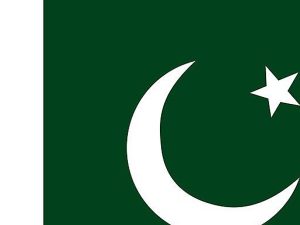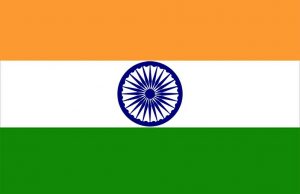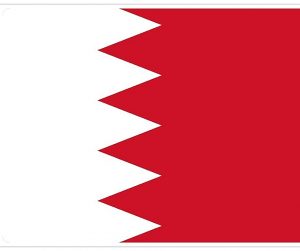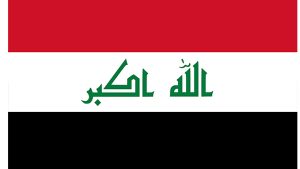Dirtiest countries in the World: Environmental pollution is a serious problem on a global scale that poses serious threats to human health and ecological stability. Since the majority of nations do not make significant efforts to restore their environments, practically every nation is impacted by pollutants in the land, the air, or the water. Several nations in the globe experience extremely high pollution levels. Consequently, they are the dirtiest countries on Earth. These countries struggle to counteract the negative effects of environmental degradation, from air pollution to water poisoning.
Some nations’ high population densities, industrial pollutants, and agricultural waste contribute to severe air pollution in several of them. Respiratory troubles, heart ailments, and other health problems have been brought on by the population’s exposure to poor air quality. In many of these nations, improper waste management procedures and untreated sewage are also significant sources of pollution, which causes water pollution and the spread of waterborne diseases.
The effects of each type of pollution on the environment and living things vary. For instance, air pollution isn’t left in one place; it spreads. Furthermore, human and marine life are frequently impacted by water pollution. The most noticeable and immediate threat to people’s lives is land contamination, which is also the last. Untidy and filthy environments can be caused by irresponsible people and their thoughtless treatment of the environment. In this post, we’ll examine some of the world’s dirtiest and most polluted nations.
Recommended: Most Competitive Universities In Nigeria
Top 10 of The Dirtiest Countries In The World 2025
1. Chad: The Central African country of Chad is landlocked. To the north, east, south, southwest, and west, respectively, are its neighbors Libya, Sudan, the Central African Republic, Cameroon, Nigeria, and Niger. Like many African countries, Chad has significant environmental problems to address, including pollution.

The nation’s primary sources of pollution include deforestation, desertification, and water resource contamination. It is a serious issue that large areas of forest are being cut down in Chad for agriculture and fuelwood. Soil erosion increases, biodiversity decreases, and greenhouse gas emissions rise as a result.
2. Mongolia: Between China and Russia, Mongolia occupies a crucial strategic position. Mongolia, a vast nation with abundant natural resources and a developing democracy since 1991, is dealing with the same problems as the rest of the world as it recovers from the COVID-19 pandemic, including the urgent need to manage the effects of climate change, global economic uncertainty, and several internal problems.
One of the nations with the worst pollution is Mongolia. Due mostly to the significant use of coal for cooking and heating, the capital city of Ulaanbaatar suffers from severe air pollution. The issue is made worse in the winter by temperature inversions.
Recommended: Most Difficult Exams in the World
3. Pakistan: Pakistan is dealing with a serious pollution crisis that is affecting the country’s air, water, and land. Concerning the prevention of pollution, the nation has a fairly small number of departments and policies. In Pakistan, industrial emissions, vehicle exhaust, agricultural debris, and ineffective waste management techniques are the main sources of pollution.

Many of Pakistan’s urban centers experience significant air pollution, particularly in places like Lahore and Islamabad. The combustion of fossil fuels, industrial pollutants, and vehicle emissions are the main causes of air pollution. As a result, the atmosphere in these cities frequently deteriorates, which can be harmful.
4. Bangladesh: In South Asia’s Bangladesh, pollution is just one of several environmental problems. Agricultural waste, vehicle exhaust, industrial pollutants, and ineffective waste management techniques are the main sources of pollution in Bangladesh. Bangladesh suffers from a serious air pollution issue.

Automobile emissions, industrial emissions, and fossil fuel combustion are the main causes of air pollution. Respiratory disorders and other health issues for the populace can result from the bad air quality. Another major problem in Bangladesh is water contamination. Untreated sewage, industrial waste, and runoff from agriculture are the primary causes of water contamination.
Recommended: Countries with highest unemployment rate in the world
5. Afghanistan: The fifth-most polluted nation in the world is Afghanistan. According to statistics, the conflict in Afghanistan was less dangerous in 2017 than air pollution. About 26,000 people died that year from illnesses linked to air pollution, whereas 3,483 people died from armed combat.

Due to limited city infrastructure, irregular groundwater use, and low rainfall in Afghanistan, about 80% of the country’s drinking water is also tainted. Afghanistan fights pollution on several fronts, including the pollution of the air and water. The country’s dirt and pollution levels are influenced by many factors, including dust storms, unrestricted industrial activity, and insufficient waste management systems.
6. India: India has some of the worst air pollution in the world. 21 of the 30 dirtiest cities on earth are found in India. In regards to the medical faculty there, Kanpur sees about 600 people each month with respiratory diseases having the worst air pollution levels in all of India and the world.

A few of the elements that affect India’s dangerous pollution levels are automobiles, dust storms, burning of coal and wood, and forest fires. The capital city of India, Delhi, is famed for having some of the worst air in the world. Rural areas in India are still heavily polluted because many people burn agricultural waste and use dung and wood for heating and cooking.
Recommended: How To Become a Successful Entrepreneur
7. Nepal: You must be asking why such a serene Himalayan country has such high pollution levels. India and China are the two titans that are seated on either side, and this explains why. Water contamination, poor waste management, and poor air quality all contribute to pollution problems in Nepal. Poor air quality is a result of the combustion of biomass, brick kiln pollutants, and car emissions in metropolitan areas like Kathmandu. Environmental problems are made much more difficult by poor sanitization systems and water pollution from industrial activity.

8. Bahrain: Located in the Arabian Gulf, Bahrain is a small island nation that struggles with pollution and other environmental issues. In Bahrain, waste management practices, vehicle exhaust, and industrial emissions are the main causes of pollution. In Bahrain, especially in urban regions like the capital city of Manama, air pollution is a serious issue.

Bahrain’s untreated sewage and industrial waste discharge into the Arabian Gulf is a major contributor to the country’s water pollution problem. The quality of the water that is available for drinking and other purposes may be severely impacted by this pollution, which may harm the environment and human health.
Recommended: Countries With The Most Billionaires In The world
9. Iraq: Iraq, often known as the Republic of Iraq, is a Middle Eastern nation. Iraq is dealing with serious environmental issues, such as pollution, as a result of years of war, hostilities, and economic sanctions. Air, water, and soil contamination are the main contributors to pollution in the nation.

Iraq suffers greatly from air pollution, especially in cities like Baghdad and Basra. The main causes of air pollution in the nation are industrial and automobile emissions, regional dust storms, and vehicle emissions.
10. Nigeria: The most populous nation in Africa experiences severe water, light, and air pollution, which causes needless illness and death among its citizens. 11,200 premature deaths are attributable to air pollution in Lagos alone. Road transportation, industrial emissions, and huge diesel generators are the three main sources; they all use antiquated fuels and hence emit a great deal of hazardous pollution.

The authorities hardly ever object to the widespread open waste burning and illicit dumping that takes place in the nation. Significant environmental dangers in the Niger Delta region are also posed by oil spills and water pollution.
Recommended: How to Make Money Online
Conclusion
In summary, the ten dirtiest and most polluted nations in the world have serious environmental issues, ranging from air and water pollution to inappropriate waste management and industrial operations. These countries struggle with serious implications like health hazards and ecological harm. Action must be taken quickly to address these pollution-related challenges and lessen their negative effects.

Edeh Samuel Chukwuemeka, ACMC, is a lawyer and a certified mediator/conciliator in Nigeria. He is also a developer with knowledge in various programming languages. Samuel is determined to leverage his skills in technology, SEO, and legal practice to revolutionize the legal profession worldwide by creating web and mobile applications that simplify legal research. Sam is also passionate about educating and providing valuable information to people.